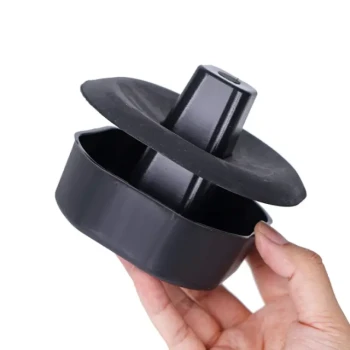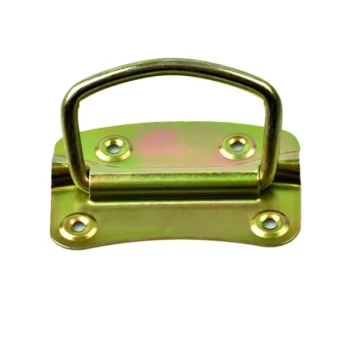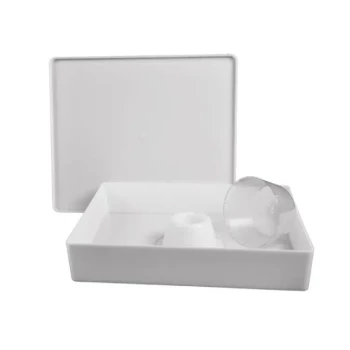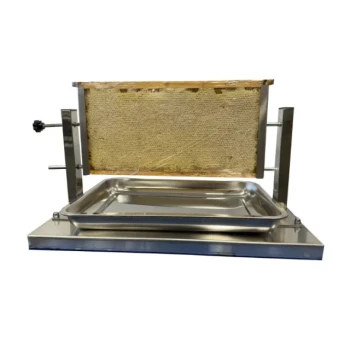The ideal height for a beehive stand is between 12 and 18 inches off the ground. This specific range provides crucial protection from pests like skunks while keeping the hive at a comfortable and safe working height for the beekeeper. The most commonly recommended "sweet spot" within this range is 16 to 18 inches.
Choosing a hive stand height is not an arbitrary decision. It's a strategic balance between protecting your colony from ground-level threats, ensuring the hive's long-term stability, and creating an ergonomic environment for your own beekeeping work.
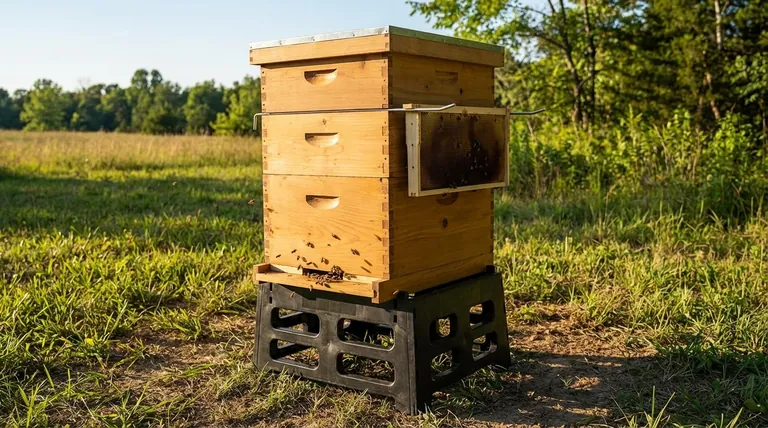
The Core Principles of Hive Elevation
Understanding why a specific height is recommended is key to setting your bees up for success. The elevation serves three primary functions: protection, beekeeper comfort, and hive health.
Protecting the Colony from Pests
The most immediate benefit of an elevated hive is defense against pests. Skunks are notorious for scratching at hive entrances at night, luring out guard bees and eating them one by one.
Placing the hive entrance at least 12 to 18 inches high makes it difficult for a skunk to stand on its hind legs and comfortably reach the entrance to perform this disruptive behavior.
Ensuring Beekeeper Comfort and Safety
Beekeeping involves regularly lifting heavy boxes, known as supers, which can weigh over 50 pounds when full of honey. A stand that is too low forces you to bend over repeatedly, putting significant strain on your back.
A height of 16 to 18 inches places the main hive boxes at a comfortable waist level for most adults. This ergonomic positioning makes inspections and honey harvesting safer and more sustainable.
Promoting Air Circulation and Hive Health
Lifting a hive off the ground prevents direct contact with damp soil. This separation is critical for the health of the wooden hive components and the colony itself.
Improved air circulation underneath the hive helps to reduce moisture buildup, preventing wood rot and inhibiting the growth of mold and mildew inside. A dry hive is essential for a colony's ability to survive a cold, damp winter.
Understanding the Trade-offs
While the 12-to-18-inch rule is an excellent guideline, you must also consider the critical factor of stability. The right choice often involves balancing competing needs.
Stability is Non-Negotiable
A beehive can become very tall and top-heavy as you add honey supers during the season. A stand that is too high can become dangerously unstable, especially on uneven ground or in high winds.
Always ensure your hive stand, whether made of cinder blocks or a dedicated frame, is placed on a level, firm foundation. For areas with high winds or larger pests like raccoons, you must secure the hive to the stand with straps or place a heavy rock on the lid.
Your Personal Ergonomics
The "ideal" height should be customized to your own body. The goal is to minimize bending and reaching.
Before finalizing your setup, stand next to your hive boxes on the proposed stand. The top of the primary brood box should be at a comfortable working height for you, reducing physical strain over the long term.
Making the Right Choice for Your Apiary
Select your hive stand height based on the most pressing needs of your specific location and beekeeping style.
- If your primary focus is maximum pest and moisture protection: Aim for the higher end of the 16-to-18-inch range to create a significant barrier.
- If your primary focus is personal comfort and ease of lifting: Adjust the height so the main brood chamber is near your waist, even if this means choosing a slightly shorter stand.
- If your primary focus is stability in a windy or uneven area: Opt for a shorter, wider stand around 12 inches and be prepared to strap the hive down securely.
Ultimately, the right hive stand height ensures the safety of your bees and the sustainability of your beekeeping practice.
Summary Table:
| Factor | Recommended Height | Key Benefit |
|---|---|---|
| Pest Protection | 12-18 inches | Deters skunks and other ground pests |
| Beekeeper Comfort | 16-18 inches | Reduces back strain during inspections |
| Hive Health | 12+ inches | Improves air circulation, prevents rot |
| Stability | Adjust based on conditions | Prevents tipping in wind or on uneven ground |
Ready to build a stable, ergonomic apiary? Let HONESTBEE, your trusted wholesale partner, supply the durable hive stands and equipment your commercial operation needs. Our high-quality, stable stands are designed for the demands of professional beekeeping, helping you protect your investment and work more efficiently.
Contact HONESTBEE today for wholesale pricing on hive stands and other essential beekeeping supplies tailored for commercial apiaries and distributors.
Visual Guide
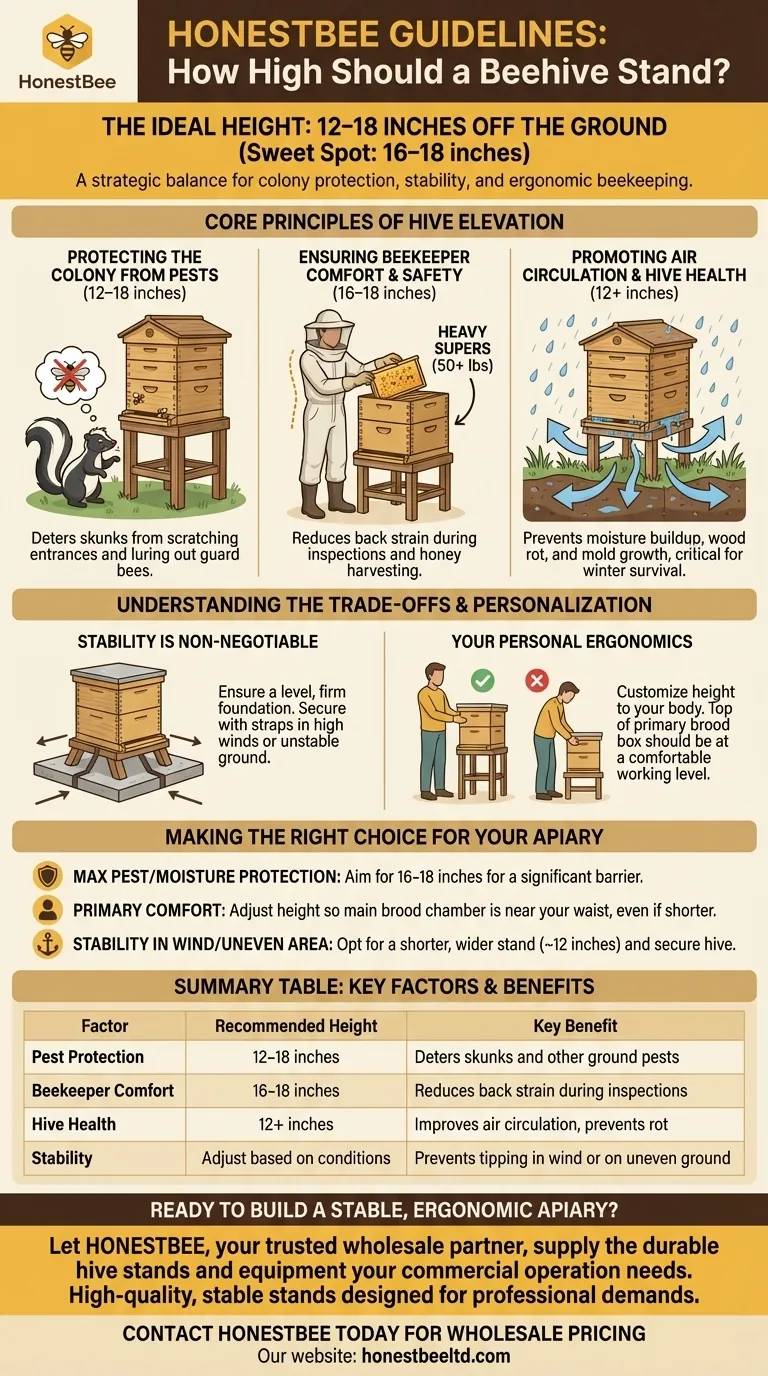
Related Products
- Plastic Bee Hive Stand for Beekeeping
- Professional Engraved Round Hive Number Tags for Beekeeping
- Metal Hive Feet Bee Hive Stand for Ant Protection
- Metal Bee Hive Stand Bee Box Stand for Beekeeping
- Professional Galvanized Hive Strap with Secure Locking Buckle for Beekeeping
People Also Ask
- Why is elevating the hive important? A Simple Step for a Healthier, More Productive Colony
- What is the purpose of a hive stand in a Langstroth hive? Protect Your Hive and Boost Colony Health
- What are the main differences between Langstroth and Top Bar Hive designs? Choose the Right Hive for Your Beekeeping Goals
- How does the longevity of plastic bee hives compare to wooden hives? Discover the Durable Choice
- Why is it important to level a hive stand properly? Prevent Catastrophic Failure & Ensure Hive Health







